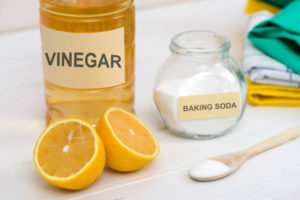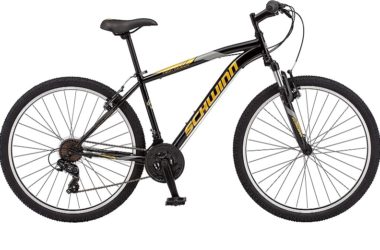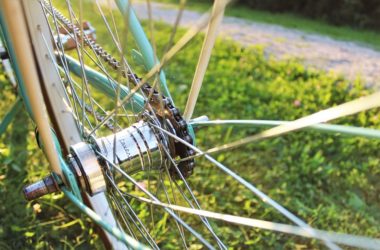Your bike is an extension of your personality, so keeping it in tip-top shape is essential. That includes the frame, wheels, and handlebars.
So let’s get started!
Bicyclists with a lot of experience know that the bicycle can break down anytime. Metal parts and car parts, for example, will rust over time. It can happen if the bike is caught in the rain and wasn’t correctly dried afterward spent the winter in a wet room or on a balcony. And the main thing is how to get the rust off a bike?.
After being washed, it was not adequately cleaned and was left for a long time (washed before winter storage, for example).
There are a variety of viable options. Your choice depends on many factors, including:
- Rust penetration rate (objective condition of rusted portions).
- Availability of one or more cleaning agents “right now“. That is, on hand, if needed immediately;
- The amount of free moisture and air.
Table of Contents
The bike’s most corroded parts
To begin damage control, it is critical to identify which sections have been harmed. Firstly you should check the condition of How to get the rust off a bike. Assess the extent of rust penetration and choose a corrosion-control solution. After you’ve completed the cleaning procedures, double-check that all of the parts that needed cleaning are in perfect working order.
As a bike owner, you know rust is a problem for all bikes. The most likely places to see rust on your bicycle are the frame, wheels, chain, and chainring. It can also occur on the seat post, but this is less common since it is usually made of steel or aluminum and therefore less susceptible to rusting.
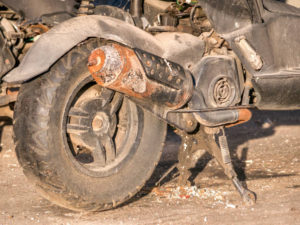
Those who believe a bicycle frame will rust first in a challenging environment are significantly erroneous. It is unlikely to suffer because it is coated in a particular paint that provides a high level of protection against such problems. But there’s a lot of corrosion on the steering wheel, rims, front fork, metal portions of pedals, bolts, arches beneath the saddle, and so on.
5 Steps Guide How to get the rust off a bike?
There are 5 main steps from which you will get how to get the rust off a bike.
Step 1: Put on your protective gloves and goggles.
The first step is to put on your protective gloves and goggles. It may seem obvious, but it’s important enough that we’ll repeat it here.
- Use newspaper to protect your workspace, including the floor and horizontal surfaces such as tabletops or countertops. The newspaper will absorb any stray dirt and oil from your cleaning process.
- Wear gloves and safety glasses, a dust mask over your mouth and nose, protective ear plugs, hearing protection (like earplugs or headphones), long pants, and closed-toed shoes (preferably with non-slip soles). You don’t want to track sanding grit into your house or garage!
- If a glass bottle breaks while being used as a propane torch igniter (which happens more often than you think), it could cause burns on exposed skin.
- If paint drips onto clothes during painting projects involving open flames (such as torching an old bike frame down), they could catch fire if left unattended.
- Loose sheet metal parts can fall off during drilling/grinding operations.
- Sparks from grinding tools may burn to clothe.
- Dangerous fumes can be released when harsh chemicals like ammonia or bleach are used for cleaning.
Step 2: Prepare Rust-Removal Product
Fill a bucket with warm water and add three tablespoons of baking soda. You must use enough water to cover the bike, but not so much that it will spill over (like when scrubbing). Also, ensure you have enough hot water on hand if your bike is extra rusty, as this step may take longer.
Boil a pot of hot water and pour it into another container. Add five tablespoons of baking soda to this new container and two tablespoons of white vinegar or apple cider vinegar.
Pour 1/2 cup of vinegar into a bucket of water. Use a sponge to apply the mixture to the rust spots on your bike frame. Be careful not to let the rust-removing solution drip onto any painted areas or components made from aluminum or other materials susceptible to corrosion.
Scrub your bike using an old toothbrush if necessary; this will help eliminate any stubborn dirt hiding in nooks and crannies. Use enough force so everything gets clean. But don’t hurt yourself!
- Place some baking soda on your sponge or rag and rub the bike’s surface with rust. You may have to let the baking soda sit for up to 10 minutes before wiping it off, depending on how much rust is present in a given area. If you are dealing with larger areas of rust, continue rubbing until you see no more signs of redness around the surface area.
- Pour some vinegar into a spray bottle and spray over areas where there was any remaining redness after washing with baking soda (or if there was not enough time for baking soda). After spraying with white vinegar, remove excess water from your bike’s surface.
Using an old toothbrush, mix the baking soda into the water until it’s completely dissolved. The resulting mixture should be thick and milky, with no dry clumps of baking soda.
Step 3: Rinse off the bike after you’ve started removing the paint
You’ll need a hose to rinse off the bike after you’ve started removing the paint. Once you’re done with that, use a wire brush to remove any remaining rust. Once that’s done, use a cloth to dry your bike. Then finish with one last power wash of all surfaces with water from inside and outside your garage.
Step 4: Use a power washer to remove the rust
A power washer can be used to remove rust by following these steps:
- Use a power washer to remove the rest of the rust and paint. You can use a pressure washer to remove your bike’s rust, debris, grime, and paint. Make sure you get one that can put out enough water pressure for what you’re trying to do.
- If you don’t have access to a power washer, find one at local rental stores, borrow one from friends who have it, or hire someone to do it for you.
- Pick out a nozzle that works best with your surface/bike type: For example, if it’s a smooth surface like chrome, then use an oscillating tip, but if it’s textured metal, then use an edger nozzle because those are designed to blast away even thick layers without damaging anything underneath them like paint might be damaged if used on chrome surfaces so make sure there aren’t any loose flakes left over after blasting away!
Step 5: Let your bike dry completely after cleaning.
Please don’t put your bike away until it’s scorched. Depending on the humidity and temperature, this can take anywhere from 12 hours to a few days. If you’ve got a hair dryer, use it on a low setting for about 20 minutes. Let your bike sit outside in the sun or place it near a fan so the moisture can evaporate faster than it would otherwise.
You can get rid of the rust on your bike, which will make you want to ride it more often.
- Remove the basket.
- Take off all lights, racks, and other accessories attached to the bike frame.
- Clean off dirt and grime using a soft cloth such as an old t-shirt or washcloth with water and soap, or use a cleaning product specifically made for bikes like Simple Green All-Purpose Cleaner 750ml (linked here).
- Make sure you remove any stickers from your bike frame because they may have been put on with adhesive residue that will damage the paint job when removed later in this process. If stickers are still stuck on after trying these methods, try using Goo Gone Original Citrus-Scented Remover Spray Gel 16 oz Bottle.
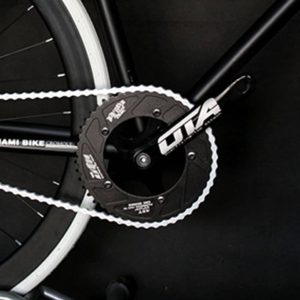
Conclusion
In this article, we have discussed how to get the rust off a bike?. There are many other ways to get the rust off your bike. Vinegar is a natural cleaner that you can use for all sorts of things around the house, including bikes. In this article, we discussed how to use vinegar and baking soda to get rid of rust from your bike once and for all!


